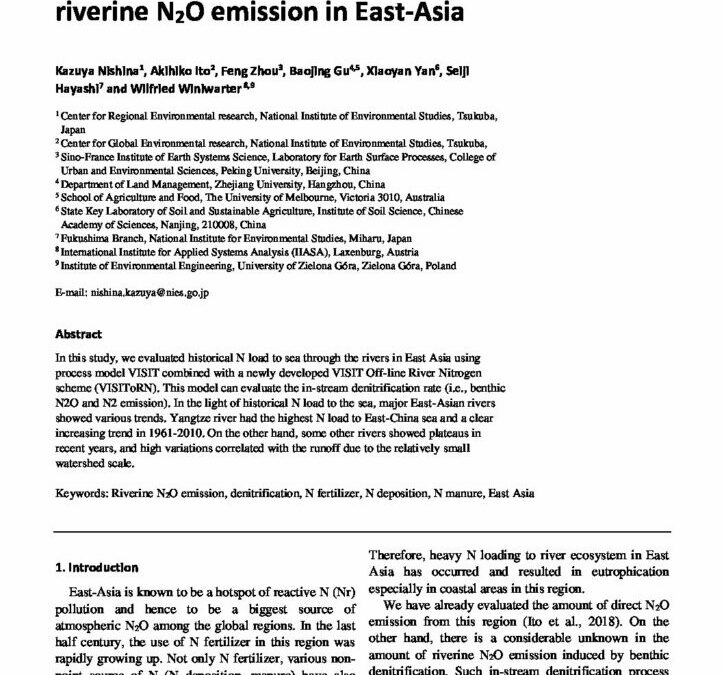Historical N load from land to East-China sea and riverine N2O emission in East-Asia

In this study, we evaluated historical N load to sea through the rivers in East Asia using process model VISIT combined with a newly developed VISIT Off-line River Nitrogen scheme (VISIToRN). This model can evaluate the in-stream denitrification rate (i.e., benthic N2O and N2 emission). In the light of historical N load to the sea, major East-Asian rivers showed various trends. Yangtze river had the highest N load to East-China sea and a clear increasing trend in 1961-2010. On the other hand, some other rivers showed plateaus in recent years, and high variations correlated with the runoff due to the relatively small watershed scale.
East-Asia is known to be a hotspot of reactive N (Nr) pollution and hence to be a biggest source of atmospheric N2O among the global regions. In the last half century, the use of N fertilizer in this region was rapidly growing up. Not only N fertilizer, various nonpoint source of N (N deposition, manure) have also increased with land-use change (i.e., cropland expansion). Furthermore, East Asia is fast urbanising in this period, which contributed increase of reactive N as a point source to a river via wastewater release.
